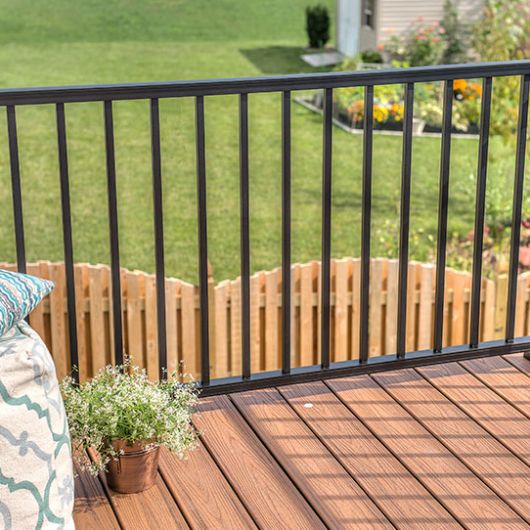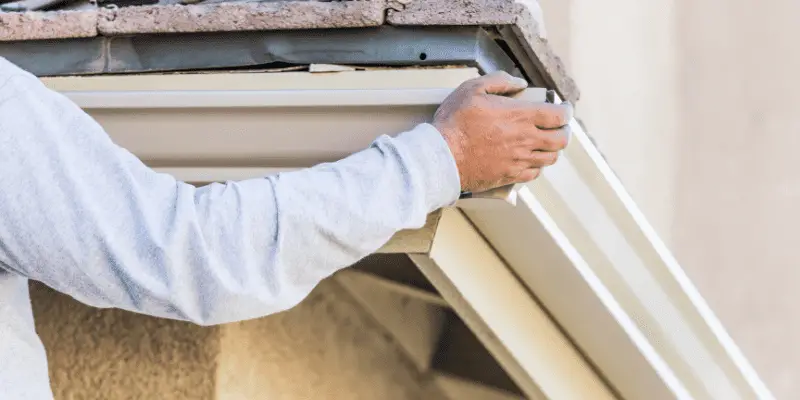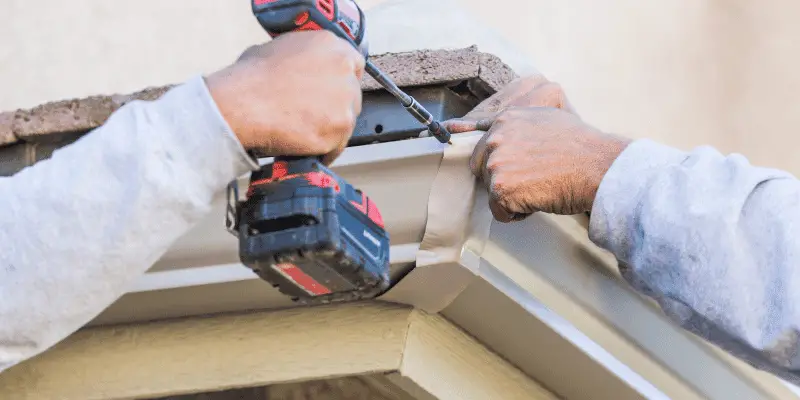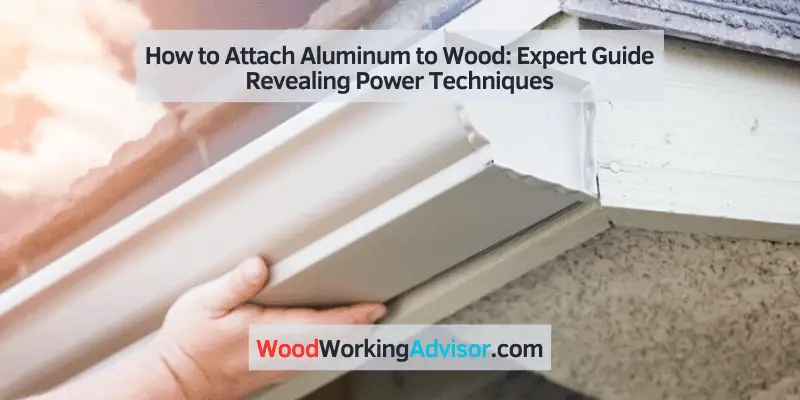To attach aluminum to wood, you can use screws or adhesive designed for metal and wood bonding.
Benefits Of Aluminum-Wood Attachments
Attaching aluminum to wood offers several benefits. Firstly, it enhances the strength and durability of structures. The combination of aluminum’s lightweight yet sturdy properties and wood’s natural resilience creates a strong and long-lasting attachment. Additionally, these attachments are highly resistant to corrosion, making them ideal for outdoor applications where exposure to moisture is common.
Moreover, the aluminum-wood combination is aesthetically pleasing, providing a sleek and modern look. The contrast between the smooth metallic finish of aluminum and the natural warmth of wood adds visual appeal to any project. Furthermore, the versatility of these attachments allows for a wide range of applications.
Whether it’s constructing furniture, building decks, or even designing structural elements, aluminum-wood attachments offer endless possibilities. Their strength, durability, resistance to corrosion, and aesthetic appeal make them a popular choice for both residential and commercial projects.
Materials Needed For Aluminum-Wood Attachment
Attaching aluminum to wood requires a few essential materials. Firstly, you’ll need aluminum sheets to secure to the wood boards. Use screws, specifically designed for joining these two materials, to ensure a strong connection. Next, a drill and drill bits are necessary for creating pilot holes in both the aluminum and wood.
This enables the screws to go in smoothly and securely. Don’t forget the measuring tape to ensure precise measurements for accurate attachment. Marking pencils help to mark the drilling and screw placement points accurately. Lastly, prioritize safety by wearing goggles and gloves.
Protecting your eyes and hands is vital during the attachment process. By following these guidelines, you can successfully attach aluminum to wood with ease.
Evaluating The Wood Condition
Evaluating the wood condition is crucial before attaching aluminum to wood. Begin by checking for damage or decay, as these issues can affect the overall strength of the attachment. Next, remove any existing finishes on the wood surface to ensure proper adhesion.
Use sandpaper to smooth the surface, creating a clean and even base for the aluminum. Additionally, it is important to ensure that the wood has proper moisture levels to prevent warping or shrinkage after attaching the aluminum. By following these guidelines, you can create a secure and long-lasting bond between aluminum and wood.
Marking And Measuring For Precision
When attaching aluminum to wood, precision is crucial. Before starting the process, accurately mark and measure the attachment points. This step ensures a seamless connection between the two materials. To achieve precise measurements, consider using a straightedge. The straightedge will help create straight lines, which are essential for a secure bond.
By following these guidelines, you can successfully attach aluminum to wood with accuracy and confidence. Whether it’s for a DIY project or a professional endeavor, precision is key when combining these materials. Remember to mark and measure carefully, and utilize a straightedge for straight lines, ensuring a clean and durable attachment.
Method 1: Adhesive Bonding
To attach aluminum to wood, one effective method is adhesive bonding. The first step is to choose the right adhesive for the job. Once selected, apply the adhesive to both the wood and aluminum surfaces. Make sure to evenly coat the areas that will be joined together.
Next, firmly press the materials together, ensuring a strong bond. Apply constant pressure for a few minutes to allow the adhesive to properly adhere. After joining the wood and aluminum, it’s important to allow for sufficient curing time. This will ensure that the bond is fully set and secure.
Following these steps will help you successfully attach aluminum to wood using adhesive bonding.

Credit: www.decksdirect.com
Method 2: Mechanical Fastening
To attach aluminum to wood using mechanical fastening, you need to select suitable screws or rivets. Pre-drill holes into both the aluminum and wood surfaces. Align the materials carefully for proper attachment. Finally, fasten the aluminum to the wood securely using the chosen screws or rivets.
This method ensures a strong and durable connection between the two materials. It is important to follow these steps to avoid any damage or weak points in the attachment. By using the appropriate fastening technique, you can ensure that the aluminum and wood remain securely joined together for a wide range of applications.
Whether you are working on a DIY project or a professional installation, this method is effective and reliable.
Method 3: Using Aluminum Trim Or Edging
Method 3 involves utilizing aluminum trim or edging to attach aluminum to wood. Trim serves a specific purpose in this process, adding a sleek and finished look to the final product. To begin, it is crucial to select the appropriate trim type, considering factors like thickness, length, and design.
Once chosen, the trim should be cut to the desired length, ensuring a precise fit. Once cut, the trim can be secured to the wood using various methods such as nails, screws, or adhesive. This step ensures that the aluminum stays in place and maintains a secure attachment to the wood.
By following these steps, you can successfully attach aluminum to wood using aluminum trim or edging.

Finishing And Protecting Aluminum-Wood Attachments
Attaching aluminum to wood requires proper finishing and protective coatings. Applying a protective coating safeguards the attachment. With a well-finished wood, the aesthetics are enhanced. Regular maintenance ensures longevity and durability of the aluminum-wood attachments. By following these guidelines, you can successfully attach aluminum to wood without any issues.
Troubleshooting Common Attachment Problems
When attaching aluminum to wood, it’s important to troubleshoot common problems to ensure a secure connection. Loose or failed attachments can be a concern, jeopardizing the integrity of your project. To avoid any issues, carefully select the appropriate fasteners and ensure they are properly tightened.
Another potential problem is fading or discoloration, which can occur over time due to exposure to the elements. To combat this, consider using aluminum with protective coatings or finishes to maintain its appearance. In difficult situations where no direct attachments are feasible, explore alternative options such as adhesive bonding or using intermediary materials like brackets or frames.
By following these guidelines, you can achieve a successful and durable attachment of aluminum to wood.
Safety Precautions
It is crucial to prioritize safety when attaching aluminum to wood. This includes wearing protective gear such as goggles, gloves, and a mask. Furthermore, it is important to operate tools and equipment safely to prevent any accidental injuries. Always read and follow the instructions provided by the manufacturer.
Additionally, make sure to secure the workpiece properly and use clamps when necessary. Take your time and avoid rushing the process to avoid any mishaps. Stay focused and remain attentive throughout the task to minimize the risk of accidents. By following these precautions, you can ensure a safe and successful aluminum to wood attachment.

Frequently Asked Questions Of How To Attach Aluminum To Wood
What Is The Best Adhesive For Aluminum To Wood?
The best adhesive for aluminum to wood is epoxy glue, providing strong and durable bonds.
How Do You Adhere Metal To Wood?
To adhere metal to wood, follow these steps:
1. Prepare the surfaces by cleaning them thoroughly.
2. Apply an adhesive suitable for bonding metal to wood.
3. Press the metal and wood together firmly.
4. Allow sufficient time for the adhesive to cure and set.
Will Liquid Nails Bond Aluminum To Wood?
Yes, Liquid Nails can bond aluminum to wood effectively. It is an ideal adhesive for this purpose.
What Adhesive Sticks To Aluminum?
An adhesive that sticks to aluminum is epoxy, cyanoacrylate, or silicone-based adhesives.
Conclusion
To sum up, attaching aluminum to wood requires careful preparation and execution. Remember to choose the proper adhesive based on the materials involved and consider using mechanical fasteners for added strength. Prepare the surfaces by cleaning and roughening them, ensuring a strong bond.
Apply the adhesive evenly, using clamps or weights to maintain pressure while the bond sets. Once the adhesive has fully cured, test the bond by applying pressure or stress to ensure its durability. By following these steps, you can confidently attach aluminum to wood and create a secure and long-lasting connection.
So, go ahead and embark on your DIY projects with the knowledge and skills needed to achieve professional results. Happy crafting!


